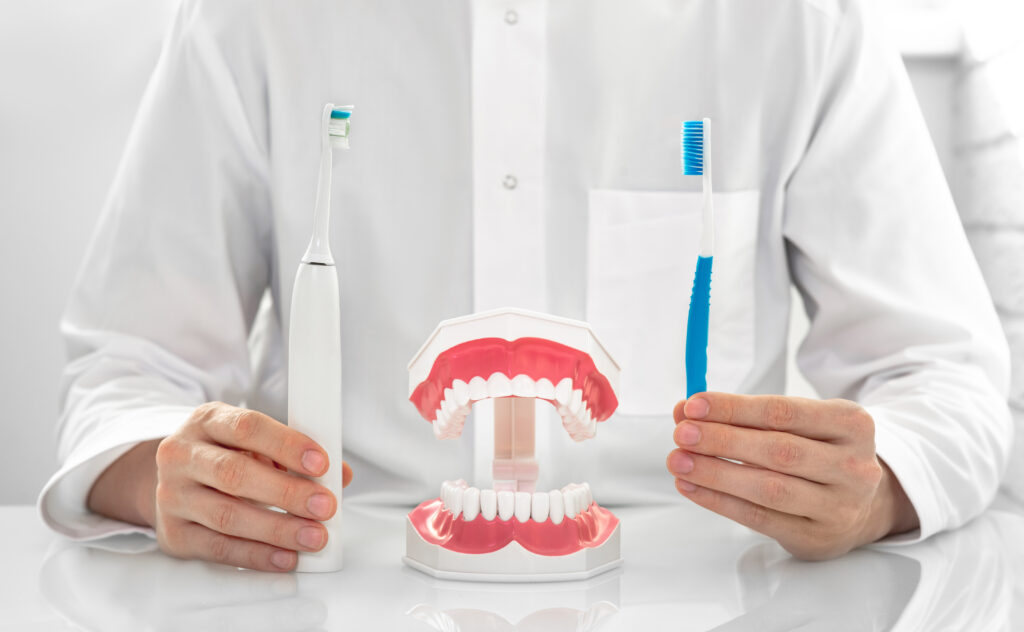19 Aug How Do Dentists Remove Old Fillings? A Step-by-Step Insight
Dental fillings are a fundamental treatment used to restore teeth damaged by decay or trauma. However, like most dental materials, fillings aren’t permanent and may need to be replaced over time due to wear, cracking, or other issues. If you’ve ever wondered how dentists remove old fillings, you’re not alone. Understanding the process can help alleviate any concerns you might have about undergoing such a procedure. In this article, we’ll explore the reasons for replacing old fillings, the methods dentists use to remove them, and what you can expect during the procedure.

Why Do Old Fillings Need to Be Removed?
Fillings are designed to last, but they aren’t invincible. Over time, they can deteriorate, crack, or become discoloured. Factors such as the material of the filling, the wear and tear from chewing, and the natural changes in your teeth and mouth can all contribute to a filling’s decline. When a filling no longer provides an effective seal against bacteria or starts to break down, it needs to be replaced to prevent further decay or damage to the tooth.
Sometimes, a filling might not be visibly damaged but still needs to be replaced if there’s decay underneath it. This hidden decay can be detected through routine dental check-ups, where your dentist might recommend replacing the old filling even if it appears intact on the surface.

The Process of Removing Old Fillings
Removing an old filling is a routine procedure in dental practices. The exact process may vary depending on the type of filling being removed, but the general steps remain consistent across different materials and techniques.
1. Evaluation and Preparation
Before the removal begins, your dentist in Dorchester will evaluate the condition of the filling and the tooth. This typically involves a visual examination and may include X-rays to assess the underlying structure of the tooth and ensure there is no additional decay or damage.
Once the dentist determines that removal is necessary, they will prepare the area by numbing the tooth and surrounding gum tissue with a local anaesthetic. This ensures that the procedure is as comfortable as possible for you, with minimal to no pain.
2. Removal of the Filling
The actual removal of the filling involves carefully drilling out the old material. Dentists use a high-speed dental drill with a bur (a small, drill-like instrument) to gently break down and remove the filling. The type of bur and the speed of the drill are chosen based on the filling material—whether it’s amalgam (silver), composite (white), gold, or another material.
For metal fillings like amalgam, dentists must be particularly cautious to minimise the release of any mercury vapour during the drilling process. They might use specific techniques, such as water spray and high-volume suction, to capture particles and vapours, protecting both you and themselves.
3. Cleaning and Preparing the Tooth
After the old filling is completely removed, the dentist thoroughly cleans the cavity to remove any debris or remaining filling material. This step is crucial to prevent contamination and to ensure that the tooth is free of decay before the new filling is placed.
Depending on the condition of the tooth, your dentist may also need to shape or slightly enlarge the cavity to accommodate the new filling. This ensures that the new filling will fit securely and provide a proper seal to protect against future decay.
4. Placement of the New Filling
Once the tooth is prepared, the dentist will place the new filling material. The choice of material depends on the location of the tooth, aesthetic considerations, and your personal preferences. Composite resin fillings are popular for their natural appearance, especially for front teeth, while amalgam fillings are known for their durability and are often used in back teeth.
For composite fillings, the material is applied in layers and cured with a special light between each layer to harden it. For amalgam fillings, the material is packed into the cavity and shaped to fit the tooth. In both cases, the dentist will carefully check the bite and make any necessary adjustments to ensure that the filling is comfortable and functions correctly.

What to Expect After the Procedure
After your old filling has been removed and replaced, you may experience some mild discomfort or sensitivity in the treated tooth. This is normal and usually subsides within a few days. Over-the-counter pain relievers can help manage any discomfort. If you notice any persistent pain, sensitivity, or if your bite feels uneven, it’s important to contact your dentist, as these could be signs that the filling needs further adjustment.
Your new filling should restore the tooth’s function and appearance, allowing you to chew, speak, and smile confidently. With proper care and good dental hygiene, including regular brushing, flossing, and dental check-ups, your new filling can last for many years.
In Summary
The removal of old fillings is a common and straightforward procedure that plays a vital role in maintaining your dental health. By understanding the process and what to expect, you can approach your dental visit with confidence. Whether your filling needs replacement due to wear, damage, or underlying decay, your dentist will ensure that the procedure is performed safely and effectively, restoring your tooth to its optimal condition.If you’re concerned about an old filling or have questions about the process, the team at Hendford Dental Practice is here to help. We offer comprehensive dental plans and home visits and are committed to providing expert care, ensuring that your dental health is always in good hands.
A perfect smile is just a call away
Contact Hendford Dental Practice today for more information, and to arrange a check-up or for some friendly and helpful advice.
Latest Posts
-
I Think I’ve Got an Abscess in My Mouth! What Do I Do Now?
-
My Filling Fell Out – What To Do
-
What Happens To Teeth Under Veneers?
-
Top 10 Tips For Maintaining Great Veneers
-
How Long Does Teeth Whitening Last?
-
Should You Whiten Your Teeth at Home?
-
What Is A Partial Denture?
-
Why Flossing is Important
-
How Long Does Dentist Anaesthetic Last? Understanding the Duration and Effects
-
How Do Dentists Remove Old Fillings? A Step-by-Step Insight
-
What Are The Hardest Teeth To Extract For A Dentist?
-
The Basics of Brushing Your Teeth


No Comments